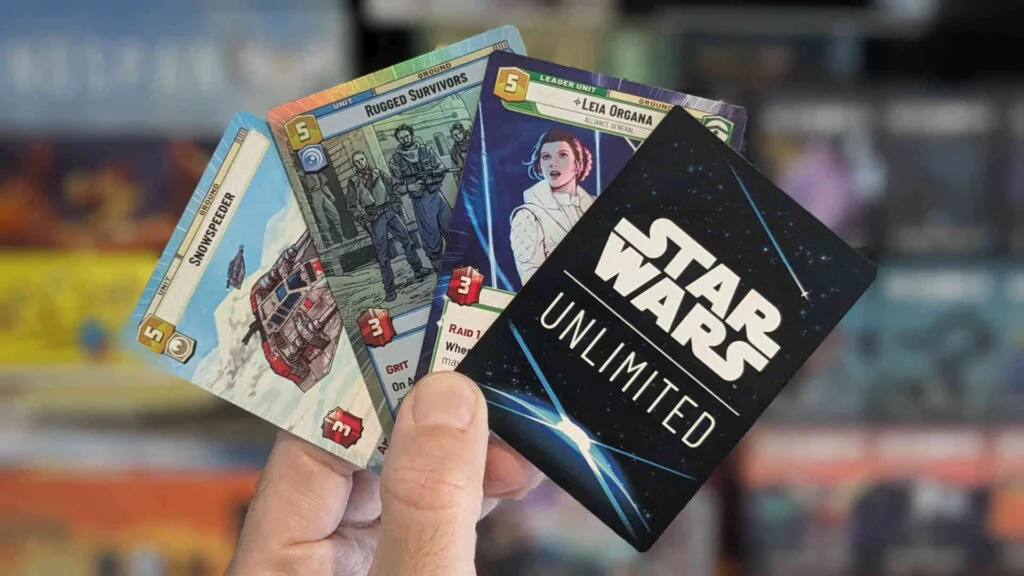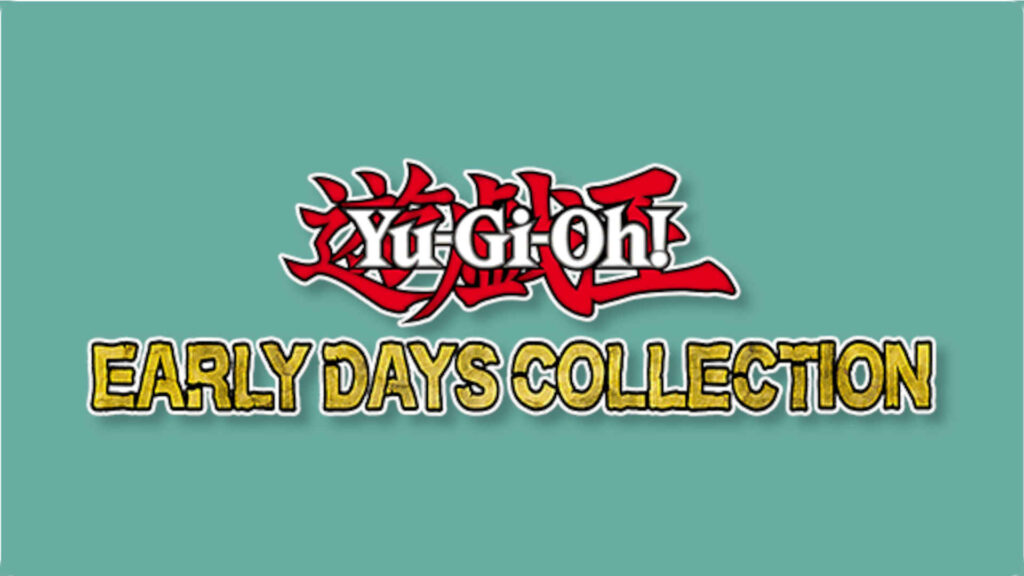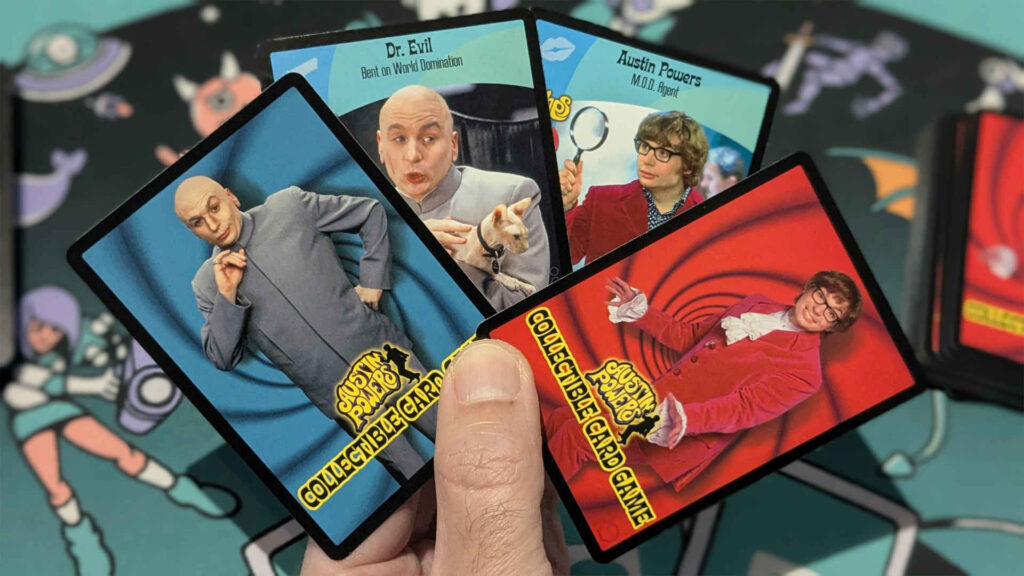Providing great value for money and accessible gameplay, Star Wars Unlimited successfully brings players back to the beloved saga, with appealing comic book style art, a simplified product range and cleverly designed booster packs to keep them coming back for more. The Force is strong with this one.
The early 90s were a strange time for Star Wars fans.
As far as we were concerned, we’d seen the last of the saga on the big screen with 1983’s Return of the Jedi; no, Ewok-themed spin-offs Caravan of Courage and Battle for Endor didn’t count.
Instead, we got our fix with the occasional tie-in comics from Dark Horse, the Timothy Zahn sequel novels that began in 1991 with the brilliant Heir to the Empire and the Star Wars Roleplaying Game from West End Games, which first emerged in 1987.
That is, until another universe arrived on the tabletop and changed gaming forever.
Magic: The Gathering brought the Collectable Card Game (CCG) format to the gaming world, allowing players to build and customise their own deck of cards to play the game with.
It was a phenomenon, and it wasn’t long until other companies started to notice just how big a commercial success it was; so we soon saw more publishers creating and launching their own CCGs, to varying degrees of success.
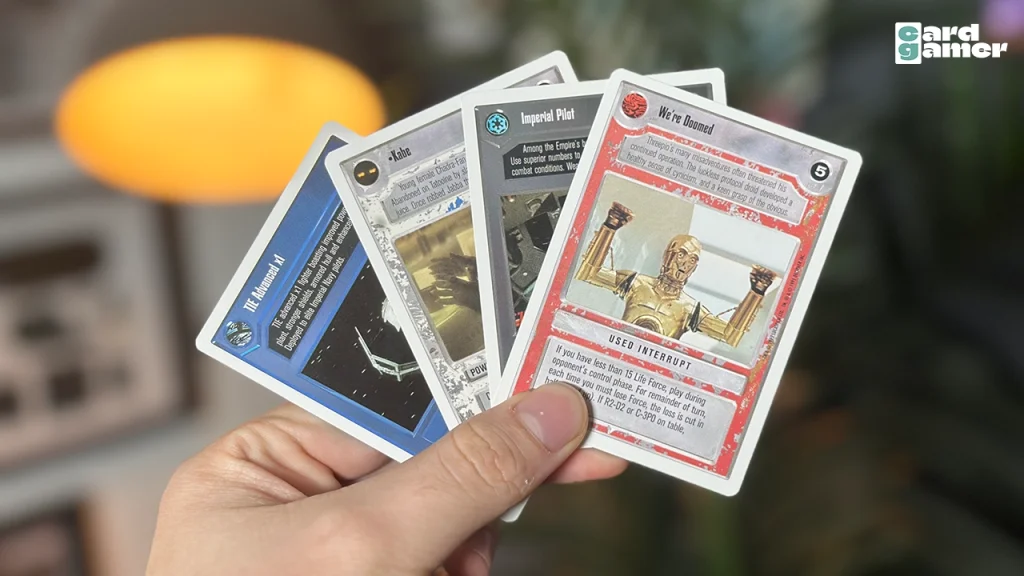
As I covered in my History of Star Wars CCGs article, Decipher launched their Star Wars Customizable Card Game in 1995, bringing the characters, vehicles, settings and stories of a galaxy far, far away to tabletops.
It was a massive success, running officially until Decipher lost the Star Wars license to Magic publisher Wizards of the Coast in 2001 (in fact, the Star Wars CCG is still running now, being maintained by a committee of fans).
Wizards of the Coast produced their own Star Wars CCG, designed by none other than Magic creator Richard Garfield; though reasonably well received, it was certainly not the tabletop gaming phenomenon that the Decipher game had become.
There hasn’t been a Star Wars CCG since then, which seems crazy in a sector where even Disney, with their Lorcana Trading Card Game, have been able to carve themselves out a massive slice of the CCG pie.
Until now, of course, with the launch of Fantasy Flight/Asmodee’s Star Wars Unlimited.
Table of Contents
ToggleHow Do You Play Star Wars Unlimited?
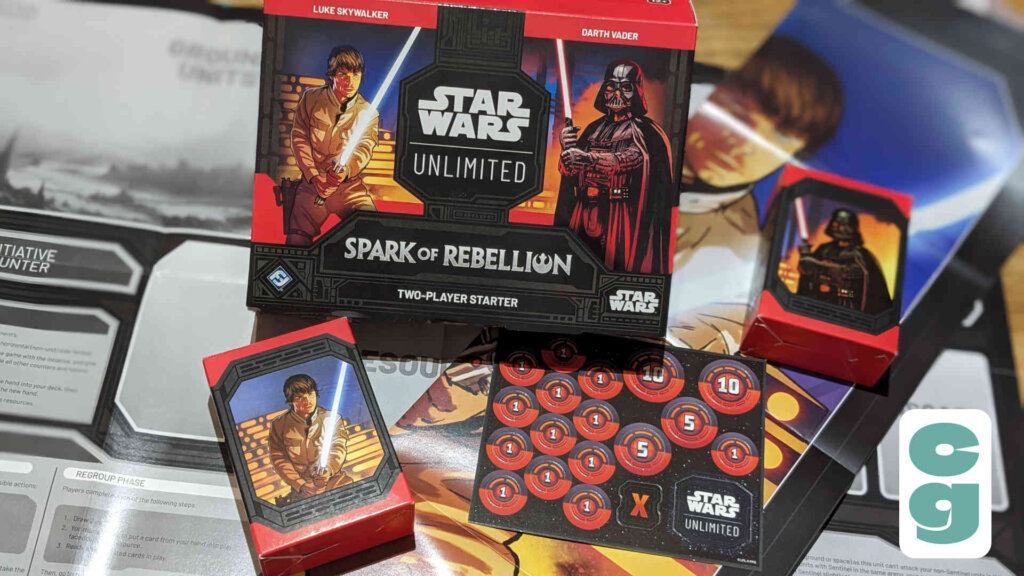
In Star Wars Unlimited, players use either a pre-constructed deck (from a Two Player Starter, for example) or build their own with a minimum of 50 cards (plus Leader and Base) using the cards in their collection.
If players are building direct from booster packs to play the Draft or Sealed formats of the game (check out our how to play Draft and Sealed games in Star Wars Unlimited for more details), then decks need only be 30 cards minimum, not including their Leader and Base.
Regardless of how the deck is built or used, note that each player must have one double sided Leader card and one base, which are placed in each participant’s play area.
There are two phases to each round: the Action Phase and the Regroup Phase.
The Action Phase sees players take a single action, then their opponent does the same. This continues until one player has taken the initiative token for the next round (which ends their turn) and all other players have passed.
During the Action Phase, players may play a card from their hand, attack with a unit that’s in play and ready or use a card’s action ability.
The aforementioned actions of taking the initiative or passing are the final two options available during this phase.
Next is the Regroup Phase; during this phase, players draw two cards, then they may place one card face down to use as a resource, then ready all of their exhausted cards.
The player who took the Initiative in the previous Action Phase then takes the first action in the next Action Phase.
Though the one-action-per-turn element may be a little alien to CCG fans, the options for actions during this phase should all be pretty straightforward and easy to absorb, even for newcomers.
How Does Combat Work In Star Wars Unlimited?
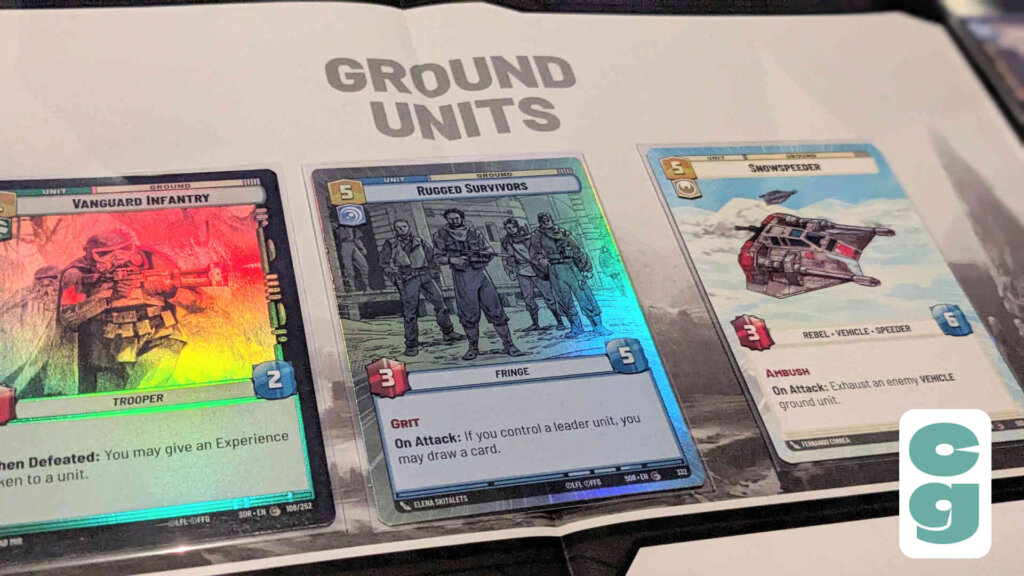
Interestingly, there are two arenas in each player’s area: ground and space.
Ground units, in the ground arena of course, may only attack other ground units or the enemy’s base. Space units may only attack other space units or the base.
When attacking a base, units simply deal damage equal to their power and take no damage in return.
If attacking another unit, both units deal damage (equal to the power level of each unit) to each other simultaneously. If this takes them to or below zero HP, they are removed from play.
How Do You Pay To Play Cards In Star Wars Unlimited?
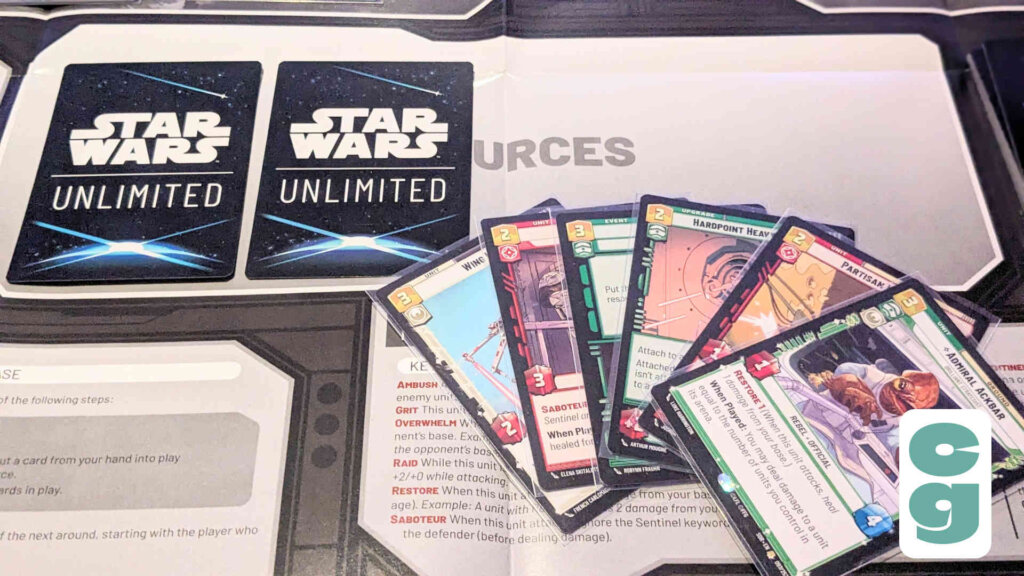
Your face down resource cards are used to pay to play units and other types of card from your hand; the cost is in the top left of the card.
However, if you don’t have the matching ‘Aspects’ (that is, card symbol and colour) on your Leader or Base, then the card will cost an extra 2 resources per missing Aspect symbol.
I’ve covered this in more detail in my Aspects in Star Wars Unlimited guide.
How Long Does It Take To Play A Game Of Star Wars Unlimited?
A game of Star Wars Unlimited typically take around half an hour to play; this can be longer or shorter depending on the experience level of the player’s involved, however.
How Does Star Wars Unlimited Compare To Other Card Games?
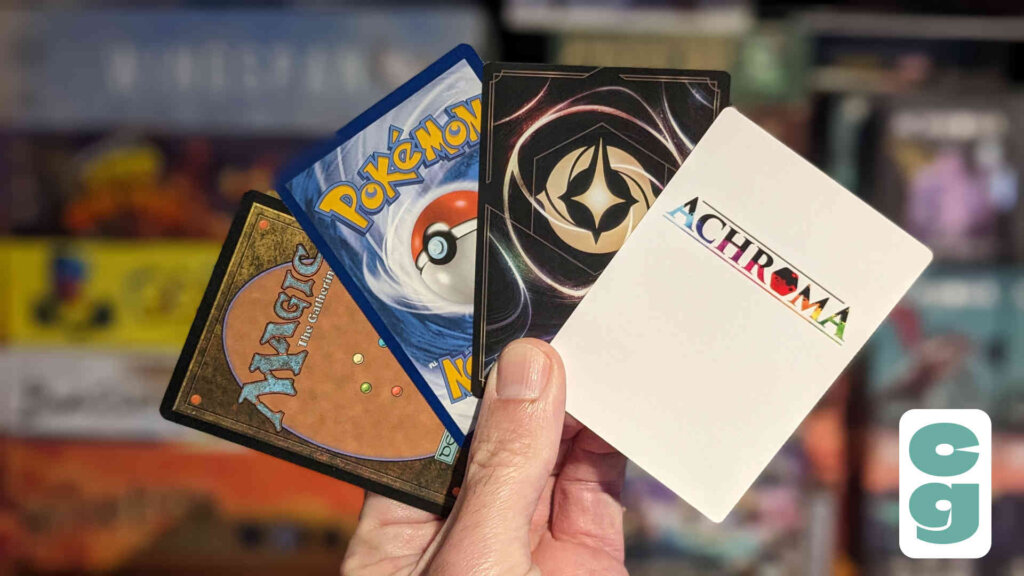
If you’ve played a CCG or TCG (Trading Card Game, which pretty much means the same thing as Collectable Card Game) before, there’ll be a lot that’s familiar about Star Wars Unlimited.
The colour system, for example, is not too dissimilar to the one found in Magic: The Gathering or Disney Lorcana.
Though the clever resource system, akin to Magic’s Lands or, in some ways, Pokemon’s Energy Types, is very well thought out and avoids the issue of needing specific cards in hand to be used as resources (which can prove disastrous with a few unlucky card draws), Disney Lorcana beat Star Wars Unlimited to the punch with a very similar mechanic.
Comparing to Lorcana, however, some cards cannot be used as Ink (which is that game’s card cost terminology); in Star Wars Unlimited, any card in your deck can be used face down as a resource card.
Another element that sets Star Wars Unlimited apart are the separate arenas that players must build up and defend with units; as battles take place in both ground and space, you need to ensure that you’re not neglecting one arena as it’ll leave your base very vulnerable.
This adds a thematic element that’s deeper and more ‘Star Wars’ than it may at first appear, when you consider how multiple battles occur simultaneously in different arenas in the climax of, say, Return of the Jedi.
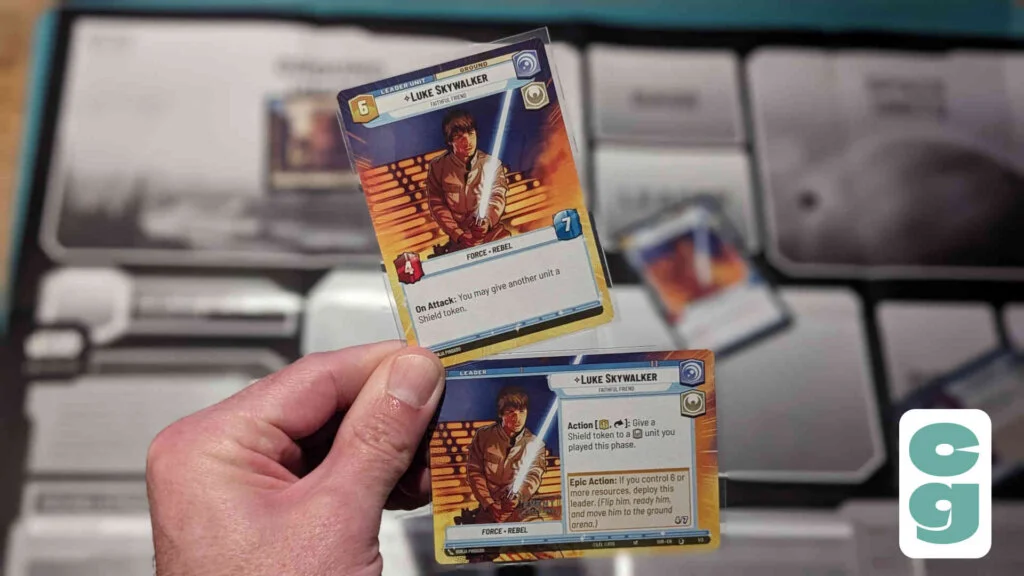
The Leader cards also add a fairly unique element to the game; once you have a certain number of resources in play, you may turn your Leader card over and place them in the ground arena as a powerful unit, which can really turn the tide.
I found the one action per player a little confusing at first, given that, as long as you have the resources and units in play in games such as Magic, Pokemon, Lorcana or, say, Achroma, you can keep performing actions as many times as you want.
However, this really helps to keep games moving pretty swiftly. Taking just one action each stops the problem of elaborate turns that take forever to carry out; this is particularly egregious when Pokemon players use Lost Zone combos, for example.
Players can be sat twiddling their thumbs while their opponent plays card after card, unable to respond or react until it’s their turn.
Star Wars Unlimited avoids this completely, and this also means that players can react and adapt their strategy after each action their opponent takes, on the fly. Games of Star Wars Unlimited feel fast paced, reactive and dynamic as a result.
How To Win A Game Of Star Wars Unlimited
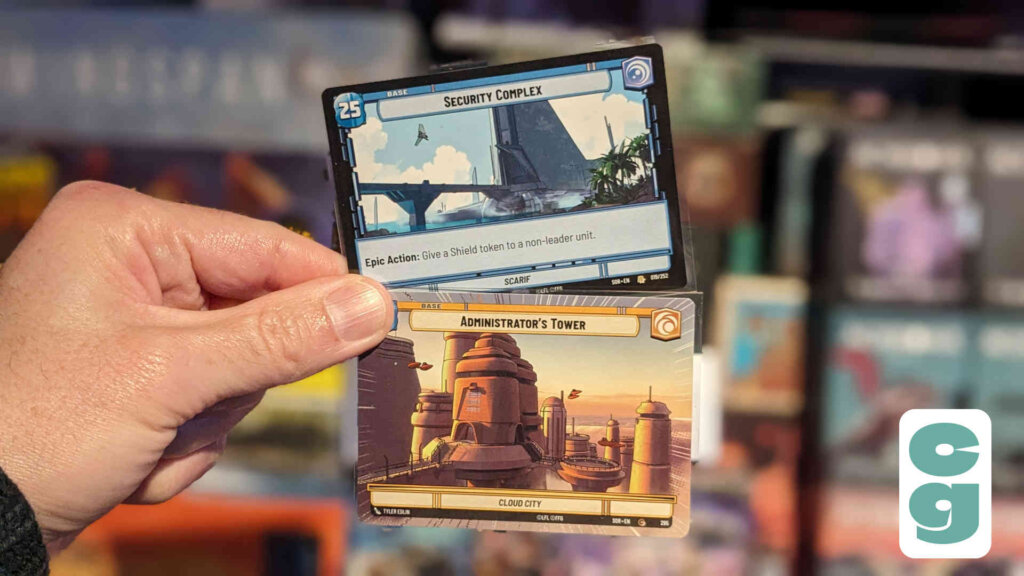
To win a game of Star Wars Unlimited, players must reduce their opponent’s Base to zero HP or less.
This is done by using units to attack a Base directly; note that there are units which can stop players from simply targeting an opponent’s Base (such as unit cards which have the Sentinel keyword).
However, in general, if you have a unit in play, regardless of whether it’s a ground or space unit, you can use its power value to apply damage to a Base.
All Common Bases have an HP value of 30, but Rare Bases are lower than this, compensating by having their own special ability that can be used throughout the game.
Where To Get Started With Star Wars Unlimited?
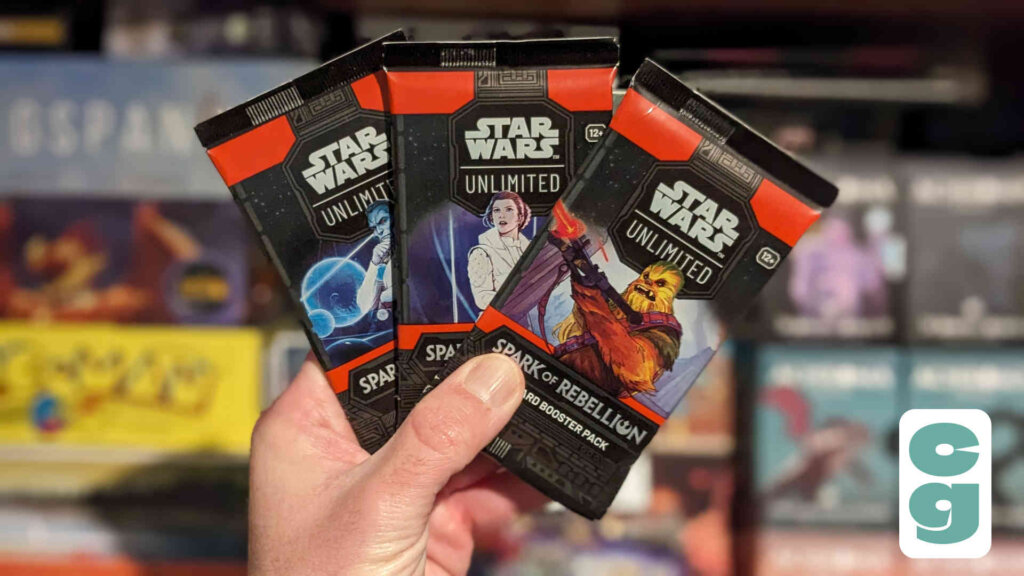
One of the smartest things that Fantasy Flight/Asmodee have done is to make the Star Wars Unlimited product range as simple as possible.
For example, for the first set, Spark of Rebellion, there are two main products: the Two Player Starter set and 16-card Booster Packs.
If you’re new to this or any CCG, I’d highly recommend getting hold of a Two Player Starter.
It comes complete with two fully functional, pre-built 50 card decks that work brilliantly out of the box; these are intended to be used with the Darth Vader and Luke Skywalker Leader cards that are also in the pack.
The Two Player Starter also includes deck boxes, counters, play mats for each player and a Quick Start rules guide.
Is Star Wars Unlimited Really Suitable For Beginners?
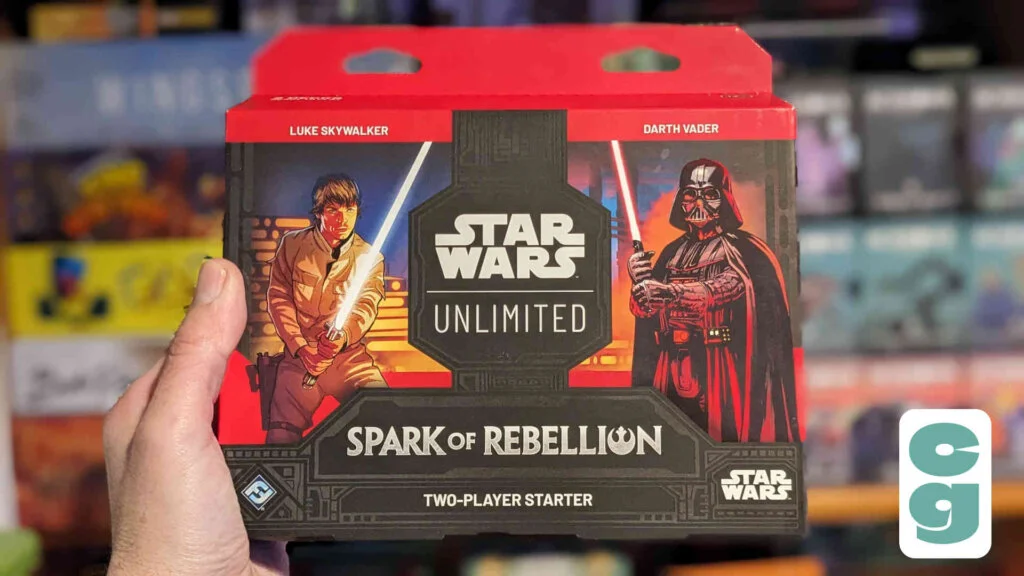
The short answer is yes, most definitely.
The reduced number of products for Spark of Rebellion, as well as the smartly designed and comprehensive Two Player Starter, mean that Star Wars Unlimited is just about the most accessible mainstream CCG that’s launched for a long time; that includes Disney Lorcana.
Without different booster types or even a selection of Starter Decks to choose from, it’s very clear what players need to get going; the Two Player Starter really does provide everything needed for two players, including a very well written and easy to understand rules guide.
The included Play Mats are also superb; though they’re only paper and won’t necessarily be suitable for long term or intense use, they’re printed with the game setup, a full turn structure and a rules reference guide, making them an invaluable tool to help ease new players into the game.
Are The Cards Worth Collecting In Star Wars Unlimited?
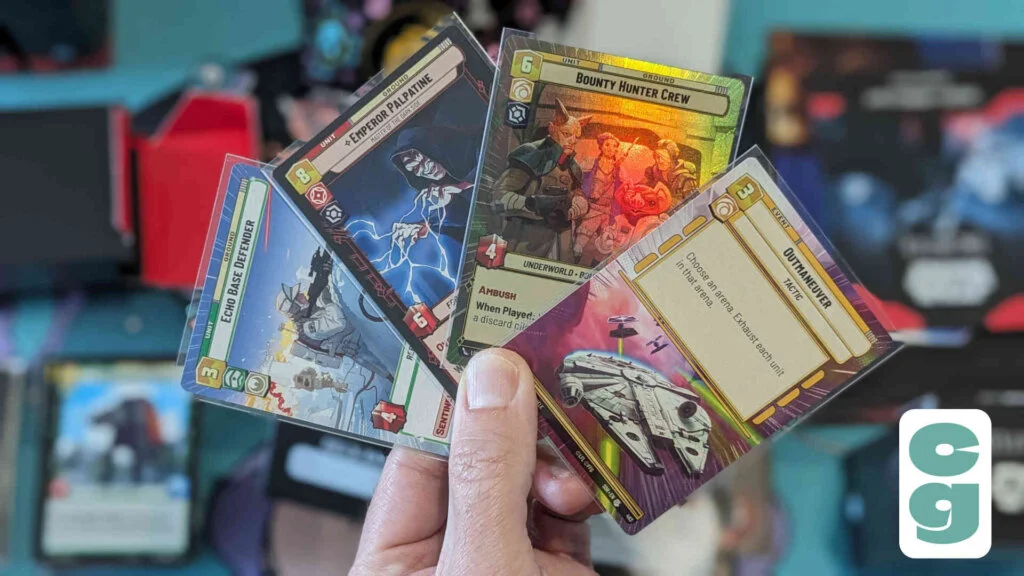
Unlike many modern CCGs, collecting seems to have been secondary with Spark of Rebellion.
Please do not mistake that as criticism; what I mean by that is that Star Wars Unlimited seems to have been designed from the ground up with playing in mind, rather than any fancy card treatment or rarities that’ll appeal to collectors or scalpers.
That’s not to say that you won’t find gorgeous art or exciting variants in your Star Wars Unlimited booster packs; the comic book style art works really well to give the game an exciting look, with only a few exceptions of artwork that I wasn’t particularly keen on.
That said, art is almost entirely subjective, so the few examples of art that weren’t to my taste may be appealing to other players. I do think, however, that we can all agree it’s a step up from relying on overfamiliar movie stills (as in the 90s Star Wars CCG) or recycling art from the previous Fantasy Flight Star Wars LCG (check out my ‘what are Living Card Games‘ guide for more on that).
There are full art cards and foil cards to find within the set too, so even though you won’t find any truly spectacular, textured foil cards or elaborate designs, there is definitely an element of collectability to Star Wars Unlimited; check out our Star Wars Unlimited Card Rarities guide for more insight on the special types of card you may find in the game’s booster packs.
In my opinion, it’s certainly not a bad thing that Fantasy Flight have also sought to simplify this aspect of the CCG; it just demonstrates further that the overall design is geared towards actually playing the game, rather than just collecting the cards.
Will There Be More Sets to Follow After Spark Of Rebellion?
Yes; Fantasy Flight have already announced that they’re working on a further nine sets for Star Wars Unlimited, which shows that they are intending to support the game for a long time to come.
Following Spark of Rebellion, which is largely set during the Original Trilogy era of the Star Wars saga, Shadows of the Galaxy will be the second set, due to launch in July 2024.
November 2024 will see the launch of third set, Twilight of the Republic; subsequent sets, though not yet named, are planned for release every three to four months, with support continuing through to 2027 confirmed at this stage.
So you can be confident that Star Wars Unlimited will be around for a long time to come.
My Final Verdict

Star Wars Unlimited has launched at a time when the dominance of Magic: The Gathering, Pokemon and Yu-Gi-Oh! has been significantly challenged by Disney Lorcana. Though it could be said that the market may then struggle to accommodate a further pretender to the throne, there are few bigger brands in the world than Star Wars.
Fantasy Flight have done a fantastic job with Spark of Rebellion; it’s affordable to get into, with fans only needing to pick up a single box in order to play with a friend, but it’s also compelling enough in its design to entice players to explore beyond the Two Player Starter.
Booster packs are cleverly designed and very generous too, each containing 16 cards, including a Leader and a Base in every single pack.
That last part is important, as it means that players can explore different formats of the game using just boosters in a way that won’t break the bank.
The art style is generally very appealing, the card design is clean, uncluttered and easy to immediately decipher, and there’s a refreshing restraint to the collectable aspect of the game.
This should mean that it’ll be easy for players to pick up, hopefully avoiding the mad rush for stock, and lack of availability, that tainted Lorcana in its early stages.
Fantasy Flight have also smartly avoided the often divisive Prequel and Sequel eras of Star Wars, though the odd card from Spark of Rebellion does feature characters or references to other eras; sticking with the original trilogy for now does give the game a more universal appeal to Star Wars fans.
In short, Star Wars Unlimited seems to really hit the ground running, with an accessible set that sacrifices the collectability of comparable CCGs in favour of aiming to get a dedicated player base on board with the game as quickly as possible.
It’s a game that has a lot to offer for fans of the Star Wars franchise, as well as for long term and beginner CCG players, with some very clever design elements, and a focus on fast paced gameplay that can very easily and, very easily, be enjoyed in a variety of different formats, in a cost effective way.
This could so easily have been a bit of a cash grab by Fantasy Flight, but the Star Wars license has been put to excellent use here, with a game that isn’t hugely innovative, but brings enough new ideas to the tabletop to provide an excellent alternative, or complement, to the existing, more dominant CCGs in the market.
This article may contain affiliate links. If you use these links to purchase an item we may earn a commission. Thank you for your support.

